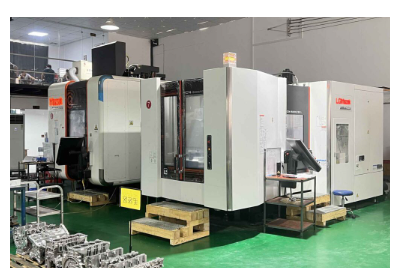Design and CAD Sketching
The refined design working is extracted from the creation of a prototype of metal. Designers and Engineers create very detailed 3D models of the part using advanced Computer-Aided Design (CAD) software. These digital models are crucial as they serve as the blueprint for the prototype, and they guarantee the accuracy of all dimensions and specifications. For example, in the aeroscope industry, components like turbine blades are modeled to withstand tolerances as tight as ±0.0005 inches, which is precisely what ensures your device performs optimally.
Choosing the Right Material: Combining Properties and Performance
Material selection is key for the prototype development of the metal that would have imitate the properties of final result. They are made of such materials as aluminum or steel or titanium or some of them in alloy form because of lightness, toughness, ability to resist corrosion. For instance, titanium might be selected as it provides an excellent strength-to-weight ratio which is ideal for automotive and aerospace applications where weight reduction is a key objective.
Case Studies on Fabrication: From the Theoretical to the Practical
There are many types of methods have the ability to convert a CAD model into a physical metal prototype. The follow is some of the most-widely known methods:
CNC Machining: This process uses subtractive manufacturing technology by which material is removed from a solid block one layer at a time, using high-speed, precision machine tools. CNC machining is preferable particularly for its precise capacity in creating highly accurate parts that boast superior mechanical properties.
3D Printing Metal Additive ManufacturingMetal 3D printing processes create parts by melting metal powder layer by layer with a laser or electron beam. It is known for its capability of forming intricate geometries that would either be difficult or impossible to create with conventional machining.
Investment CastingThis millennia-old method (albeit much more refined since the days of old) involves a wax model of the prototype that is created and then conserved in a ceramic shell. After the shell hardens, it is heated to melt out the wax and the void is then filled with molten metal. Earlier I use this with complex designs and it is very popular in jewelry-making and art.

Post-Processing: Detail Refining
After fabrication of prototype, it may require some post processing for improvement of mechanical properties and surface finish. Depending on how the prototype is to be used, this could entail heat treatments, sanding, padding, custodial, etc. Automotive parts may need extra anodizing or powder coating to keep up with environmental pressures, for instance.
Testing and evaluating the prototype to make sure it works as intended
One of the most important stages in the process of creating prototypes is testing. Evaluated properly to meet all functional and industrial standards the prototype. These may include load tests, thermal tests and fatigue tests. This feedback is critical, as the tests may then result in changes to the design, and therefore require more prototypes.
Integration and Final Review
The prototype is then generally embedded in a full-up system (ie, engine build or structure frame) and to see how it interfaces with other systems. It helps to ensure that this prototype is functioning well on similar setup of what this prototype is going to be glided into. With this setup, the design is adjusted here if needed, before it is finalized in the factory for mass production.
Producing a metal prototype is a complicated job, yet it is one of the most crucial actions in the product development process that enables designers and engineers to see how their ideas act in actual life. This ensures that any issues are resolved before production, saving time, money, and improving the quality and reliability of the end product.